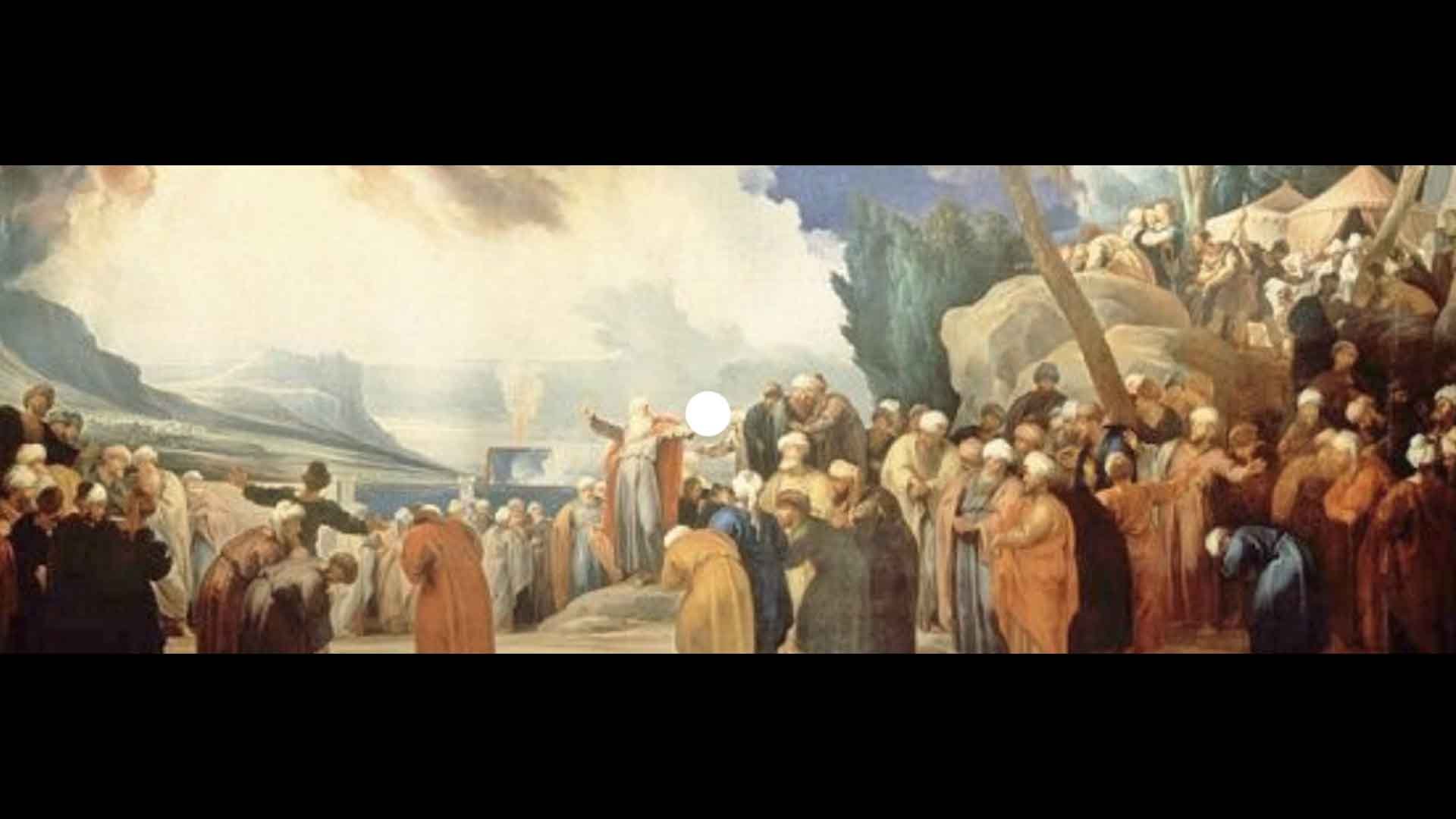AI and Spirituality: The Disturbing Implications
AI and Spirituality: The Disturbing Implications
In mystical traditions the sense of the immanent gives rise to religious experience even ecstasy whereas in orthodox faiths the infinite distance of the divine in its transcendence produces fear and awe. The total availability and ubiquity of AI on the one hand and the massive data bank that allows its reach everywhere electronic data is uploaded to the cloud, has this same ironic contrast seen in the struggle to reach the divine yet paradoxically never quite access it.
75th Birthday Blessings for My Children
Eldad and Medad: What Did They Prophesy?
Eldad and Medad: What Did They Prophesy?
This most enigmatic pericope leaves open more questions than it answers. Who were these two prophets and what was their prophecy. Commentators seem unable to answer these two basic questions. In the following meditation I suggest a contextual solution that provides a spiritual roadmap to those (like them) with a questionable genetic (yichus) or ethical past.
By situating the story close to the parsha of the “inverted nuns”1 I believe the message might well provide support to the splitting between the murmurings.
NUM 10: 35-37
Inverted Nun's: The Space Between Calamities
If the Aron was the repository of both the new luchos and the broken luchos, the shards then what is being offered is the shattered souls and lives as well as the hope for a wholesome future.
It was precisely these verses that speak of the travelling Aron that were placed between the calamities to split them, as if to intentionally share with us the deepest Torah, that our avodah MUST include the calamities the shattered broken souls we were as well as what we must endure in the future as part of our service.
The presence of these verses is a comfort that the Aron, the Schechinah is with us in troubled times as much as good times, and we offer both the good the bd and the ugly on the altar of service.
The interjection of these verses out of place is just the opposite and fits with our sense of being out of place in this world and in these times.
Eldad and Medad whose geneology was suspect and who were too shamed to show up in the Sandedrin lottery continue to prophesy and according to the midrash chaseros ve yeseidos their prophesy was precisely the healing presence of the Aron for future generations to realize all is never lost, that the calamities besetting our people and ourselves individually are narratives surrounding the center location of the Ark of the covenant the Aron Bris that centers the hope and longing, the healing within the pain.
Tzniut: A Re-Appraisal
A comprehensive look at a contentious topic relying on traditional sources alongside modern scholarship.
Shabbat Hagadol 2024
Insights from Edgar Alan Poe, Rashi, Sforno, and the Hasidic masters, this essay is preparation for Passover 2024.
Tzimtzum: A Review
Dedicated to the memory of my dear father Shlomo (Willy) ben Yehudah Ungar’s first yahrzeit.
Dad's Tombstone Setting and Siyum
Mariupol and Warsaw Ghetto: Theodicy Then and Now
Mariupol and Warsaw Ghetto: Theodicy Then and Now
Underlying assumptions:
1.Despite history Am Yisrael remains in a covenant with the divine
2.Are there times when the suffering of exile is so profound that this covenant is called into question (hester Panim)?
3.Is man’s inhumanity to man of God’s concern(hashgachah protis)?
4.What is our role when seeing such disaster as the Chosen People?
Gulgolta: Between Thought and Silence
In this essay, Dr. Julian Ungar-Sargon explores the space between thoughts as a matrix of sorts, comparing it to the interstellar medium that contains all the material needed to make stars and planets. He also delves into the spiritual significance of the skull and the oral tradition in Judaism, and concludes that the space between repeated words in the Torah is where exegesis occurs, and where we breathe between the stars.
David's Punishment As a Window into the Torah
In this essay, Dr. Julian Ungar-Sargon discusses how in the Jewish tradition, the Torah is referred to as a "song," as it stirs the heart and awakens an inner sensitivity to the divine nature of Torah.
The 402 Bus Driver, Nora Alila
In this essay, Dr. Julian Ungar-Sargon misses a bus and discusses midrashic commentaries on the Judah and Tamar story in Genesis, the Leshem's interpretation of faith and suffering, and the idea of Nora Alilut. He touches on the tension between the midrashic impulse and Kabbalah's interpretation of divine judgment.
Obituary for Rabbi Lord Jonathan Sacks
In this essay, Dr. Julian Ungar-Sargon eulogizes his old friend from childhood, Lord Rabbi Jonathan Sacks.
Double-Edged Sword of Incense
In this essay, Dr. Julian Ungar-Sargon discusses the ketoret (incense) offering in the Temple and looks at how it was brought not for atonement but for joy.
Aliza and Sasha's Bris: Pesach 2020
This is the Torah that Dr. Julian Ungar-Sargon shared on the occasion of the bris of his grandson, Shimon Emanuel.
Between Humility and Nihilism
In this essay, Dr. Julian Ungar-Sargon discusses the use of the term "kivyachol" in Jewish literature, which means "as if" and is used to describe anthropomorphic language. He highlights the importance of love, desire, and longing in the service of the divine, rather than logic and reason.
Yartzheit Vort for MUM
In these two essays, Dr. Julian Ungar-Sargon teaches Torah in honor of his recently departed mother.
Strung Between Orthodoxy and Heresy
In this essay, Dr. Julian Ungar-Sargon explores the complex role of apostates in the Jewish tradition.
The Parable of the Snake Charmer
In this essay, Dr. Julian Ungar-Sargon discusses how the parable of the snake charmer is used to illustrate the power of the yetzer and the importance of faith. He raises questions about the divine-human relationship and the subversion of the biblical text by the Midrashic imagination.




















